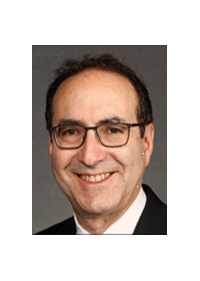My Turn: Reflections of an Academic Radiologist During the COVID-19 Pandemic
Jeffrey S. Klein, MD, reflects on his experience as an academic radiologist during the COVID-19 pandemic

Jeffrey S. Klein, MD, is the A. Bradley Soule and John P. Tampas Green and Gold Professor of Radiology at the University of Vermont College of Medicine. He is the RSNA Board of Directors liaison for publications and communications. A renowned expert in lung cancer staging and detection, Dr. Klein has served as editor of RadioGraphics since 2011.
The COVID-19 pandemic has presented unique challenges for radiologists and the health care systems we work in. Processes normally utilized by radiologists to provide clinical, teaching, research and administrative support to our departments, parent institutions and professional organizations are now in flux, and the future is uncertain. I’d like to share some thoughts regarding the pandemic’s impact on the practice of radiology by highlighting several aspects of our work that have proven more challenging and to discuss some positive things I believe have emerged from this experience.
The requirement to adhere to shelter-in-place and social distancing orders implemented by most states since March has unfortunately led to the increased isolation of radiologists in their respective health care systems. This has exacerbated a growing trend resulting from technologic advancements in radiology and the decentralization of the radiology workforce. During this time, many radiologists have lost some of the professional satisfaction derived from direct consultations with colleagues and our routine interactions with students, trainees, technologists, nurses, physician assistants, referring practitioners, and patients. The pandemic has negatively impacted our ability to directly teach residents, fellows and students in our departments. We are challenged to remotely mentor trainees and junior colleagues working on scholarly projects. This year our department will forgo a formal residency graduation where we would gather in person to celebrate an important and influential milestone in our trainees’ careers and collectively reflect back on our time together.
Much of our professional satisfaction comes from assisting our colleagues in patient diagnosis and management, and this has been affected by the pandemic as routine imaging has been significantly curtailed and screening examinations have been postponed. The current situation also leaves many radiologists feeling helpless, as most of us are ill-suited to work alongside our front-line colleagues in providing clinical care for patients. That we are not alone in this limitation is of little solace.
Promising Trends Emerge
There are however positive aspects to this experience that are important to recognize. While the response to the pandemic has resulted in a marked reduction in imaging volumes and negatively impacted departmental and organizational finances, these responses have produced interdisciplinary teams with members from across the health care enterprise that can rapidly process data and react to challenges quickly and efficiently. For radiology, this has the potential to translate into the development of more streamlined methods of delivering imaging services to our patients and providing better support to our referring practitioners. There is also a renewed awareness throughout institutions and by governmental bodies of the central role that radiology plays in patient care. For example, the May 6, 2020, press release from Vermont Governor Phil Scott specifically announced the resumption of diagnostic imaging services to Vermont patients as the state re-emerges from a Mar. 24 stay-at-home order.
The foresight our University of Vermont Medical Center administration demonstrated years ago by providing home workstations for faculty to review and dictate imaging studies remotely has served us well during this pandemic, allowing us to implement flexibility for clinical coverage while maintaining proper social distancing. These remote capabilities also allow us to review imaging findings in real time with our providers, a capability available previously but not routinely utilized until now.
Perhaps the most positive result of this experience is the increased collegiality among radiologists internationally, as we all try to maintain our professional connections and share experiences and emerging information on the pandemic. Multiple groups have stepped in to fill professional needs by providing online lectures, webinars, podcasts, video presentations, and best practice documents to assist us in meeting the COVID-19 challenge. The RSNA COVID-19 Task Force has led our Society’s efforts to identify the ongoing needs of our members worldwide and offer online practice and educational resources and publish cutting-edge research on COVID-19 imaging manifestations and pandemic management in our journals. The hope is that these collaborative efforts will remain robust in the future and help us collectively address the common challenges we face as a global radiology community.